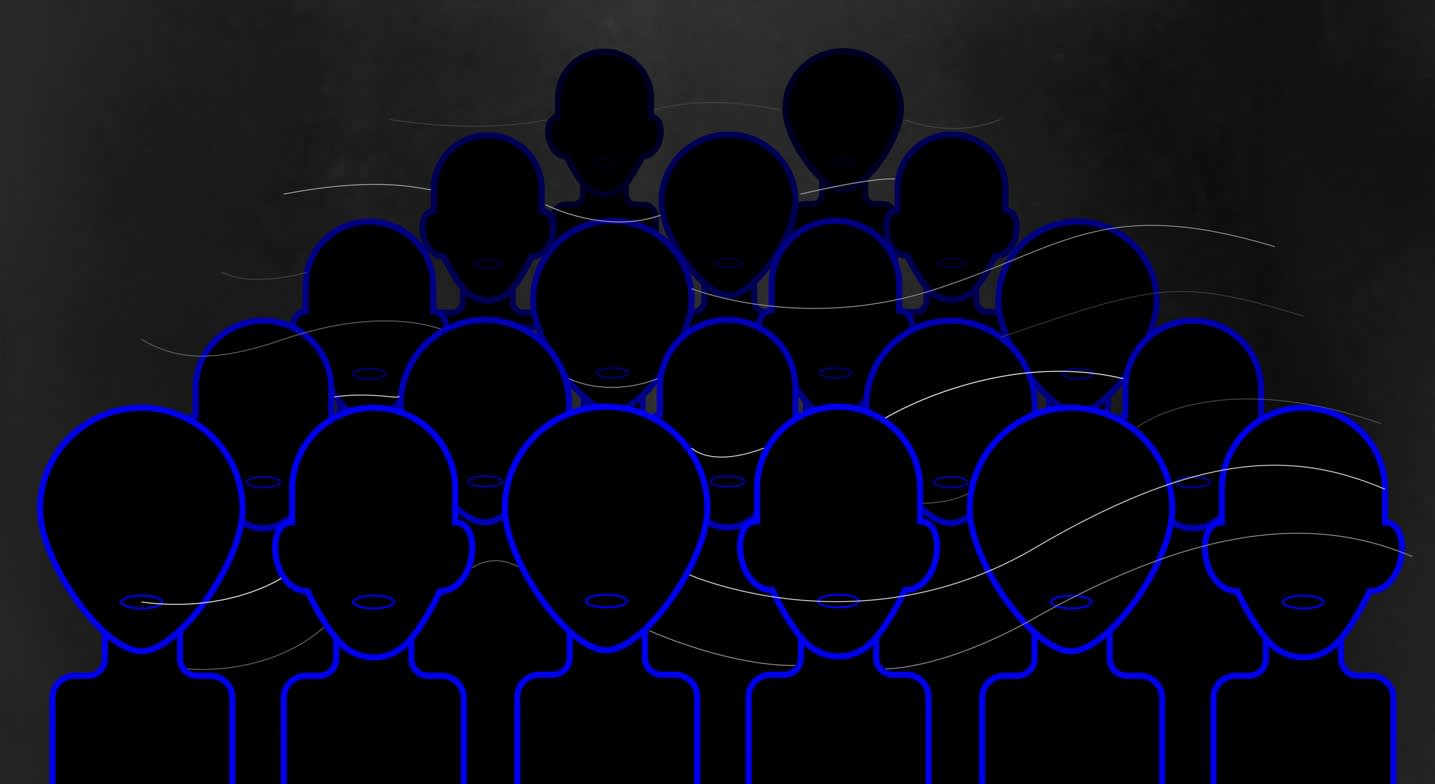As a society — arguably even as a species — we’ve been obsessed with the idea of alien life for as long as we’ve known about the larger universe. Do aliens exist? What might they look like? Sound like? Will we ever meet them? Would we be able to understand them even if we did? Would they come in peace or simply exterminate and colonize before anyone can say, “Today, we celebrate our independence”?
That last phrase suggests the place we most often go to explore these questions: pop culture. As film and television have flourished, so too have our interpretations of the extraterrestrial: from the Selenites in the world’s first science-fiction film Le Voyage dans la Lune in 1902 and the destroyers of Byron Haskin’s classic 1953 War of the Worlds, to the monsters of the Alien trilogy and comically bizarre brainiacs of Tim Burton’s Mars Attacks!, to the helpless experiment subjects of The X-Files and slum-confined “prawns” of Neill Blomkamp’s District 9, the alien has come to represent not only our imaginings of life beyond Earth, but our many cultural concepts of “the other,” as well.
“[Some theorists believe that] in terms of American culture, the [science fiction] Alien [has] simply stood for ‘everything the center was not,’ basically ‘anything un-American, unfamiliar, alien,’” writes Charles Ramirez Berg, a media studies professor at the University of Texas at Austin. He sees post-1977 extraterrestrial films, for example, as “a culturally unconscious means of working out the whole question of immigration as it has emerged in the last several decades.”
And while visual effects artists are usually provided the budget to CGI their way into any alien body they can imagine, inventing the actual language aliens use requires a lot more complex, ongoing thought. In that way, few advancements better represent society’s beliefs and perceptions of extraterrestrial life than the evolution of the alien voice.

Until 1982 or so — the year linguist Marc Okrand was hired to create Vulcan and Klingon languages for use in the Star Trek film franchise (and putting Star Wars and its gobbledygook to shame in the process) — the “authenticity” of an alien voice or language hardly registered on Hollywood’s list of priorities. A simple wire-and-hammer pew-pew noise or random gibberish worked just fine in most cases. Depending on just how alien you wanted your E.T. to be — friendly and humanoid, for a worthy ally? Instinctual and insectoid, for a satisfying kill? Mechanically advanced and unresponsive, to inject existential terror into the suburban American psyche? — you just chose a sound that fell on that narrow spectrum. Mars Attacks’ entire comedic premise, for example, hinges on the Martians’ sadistic sense of humor as they raze human civilization, so they sound like the Aflac duck’s least popular cousins, while the terrifyingly unstoppable xenomorphs of the Alien franchise forsake speech entirely in favor of a mash-up of deadly predator noises like snake hisses and big cat snarls.
Meanwhile, the few actual (or mock-actual) made-to-order languages like Klingon came into being courtesy of loaded code words that actually have nothing to do with how a language works, and everything to do with how viewers are supposed to perceive the aliens speaking it — that is, foreign and (let’s be real) not white. (Note: this article explores the alien and alien languages in Western culture. There are conlangers living in non-Western countries, of course, but their work is rarely, if ever, featured prominently in pop culture the way American conlangs are, so discussing them en masse would be impossible.)
“[Showrunners] say they want some sort of ‘harsh,’ ‘visceral’ language, and I’m like, ‘Yeah, I know what that means — they want it to sound more or less like Arabic,’” says David J. Peterson, the creator of both Dothraki — a language similar to Klingon in its “harshness” — and Valyrian for the show Game of Thrones, among others. A linguist and the author of The Art of Language Invention, he’s currently the only professional language creator in the world able to make a full-time living in Hollywood, having also worked on Thor: The Dark World, SyFy’s Defiance, and the CW’s The 100. Now, he rolls his eyes impatiently as he explains how little non-linguists understand about language. “[The throaty ‘huh’ consonant sound they want] is present in most languages that English-speakers are familiar with. It’s just 100% cultural stereotyping. In reality, there’s no such thing as a ‘harsh’ language.”
Hollywood now has to answer to audiences that are nerdy as hell and aren’t going to take baby talk and pew-pew lasers anymore.
In recent years, however — thanks in no small part to the internet, that bastion of decimating naïveté one “actually” at a time — people have started paying a lot more attention to alien languages. At least in the mainstream, they have; philosophers, sci-fi geeks and language enthusiasts like Peterson have been creating full-fledged fictional languages for centuries (think Esperanto). With the dawn of message boards and other online communities, language creation, like so many other arts and hobbies, developed into an extremelyniche subculture.
In 2001, it was given an official name: “conlanging,” a portmanteau for “constructed language”; a few listservs, thousands of conlangers, and countless languages later, Hollywood now has to answer to audiences that are nerdy as hell and aren’t going to take baby talk and pew-pew lasers anymore. Taking what cues they can from scattered predecessors, studios have begun eagerly shelling out for professional conlangers like Peterson to legitimize their extraterrestrial and fantasy cultures. (There are a number of working conlang pros, but not enough work make it an industry unto itself, much to Peterson’s dismay.) Once mind-bogglingly geeky oddities, J.R.R. Tolkien’s Elvish and Okrand’s Klingon have become touchstones with plenty of inspired descendants, from Avatar’s Na’vi to Peterson’s Game of Thrones tongues.
So if the alien voice is becoming a more nuanced element of mainstream fantasy and sci-fi, could that change how Western cultures view aliens and “the Other” entirely? That idea has certainly evolved as our views on immigrants and outsiders have become more complicated. But first we have to ask, what makes an alien language truly alien at all? If they’re speaking full languages on-screen, says Peterson, the answer is: not much.
“Most of the alien languages that I’ve created are basically human languages,” he explains. “They’re just human languages that take place in a different area. It’s really, really hard to create aliens, in the most basic sense: something that’s truly non-human. You’d have to go down to the very building blocks, the things that make us human, and do something completely different.”
The voices we can imagine for extraterrestrials are bound to become more imaginative.
And if you’ve seen a single science-fiction movie or TV show, you know that that’s rarely the case, especially if audiences need to empathize with them at some point. Franchises like Star Trek are built on the idea that even people from the most alien of cultures are to be respected, if not embraced; even the segmented, clicking prawns of District 9 were distinctly human in their bipedalism, family structures, and social behavior (necessary for Berg’s immigrant metaphor to work, after all). Despite modern CGI, talking aliens are mostly played, in some way, by humans.
“The thing about Klingon was that, when it was designed, they had the constraint that it had to be spoken by human actors,” says Nick Danis, a Ph.D. candidate in Rutgers University’s linguistics department who will be teaching a course on constructed languages this spring. “They had all the same mouth parts: one tongue, a nasal passage, teeth. The same with Game of Thrones. They’re all going to have to speak a language that uses a subset of sounds that you already find in natural languages.”

If a movie studio is employing a conlang, it’s hard to imagine it spending even more money to give a movie’s alien language an extra layer of non-human sounds or gestures, but it’s certainly possible with today’s special effects tools. If conlangs become more common, the voices we can imagine for extraterrestrials are bound to become more imaginative (not to mention logical, astrobiologically speaking), eventually transcending their present human limits while sticking to a budget.
“We had one set of aliens for [the TV show] Defiance that are just gaseous creatures,” Peterson recalls. “They need suits to contain themselves. [The showrunners] had them speak, which I thought was a bummer — I wanted to do a language for them that was just light-based, but it would have been tremendously difficult. I could’ve created the whole system, but then it would’ve needed to be done exactly right in order to work. I’m sure the VFX department wouldn’t have had the patience for it.”
Regardless, as far as we’ve come culturally in unpacking outsider themes in sci-fi stories, we’re hardly out of the woods. Ramirez Berg calls our latest wave of alien movies a “Sympathetic Alien” subgenre, including titles like E.T. and (again) District 9, that, like a bored housecat, swats at but never summons sufficient effort to tackle the real issues at stake, such as the fact that we insist upon “us” and “them” categories in the first place. As Berg puts it, “For all the space creatures’ virtues, they are still aliens [and must return home]; a difference that makes … all the difference in the world.”
Best-case scenario, the more full languages we create for our aliens, the more understanding we’re bound to have about how language itself works — which, if we’re lucky, could at least mean the end to all that “harsh” business.




